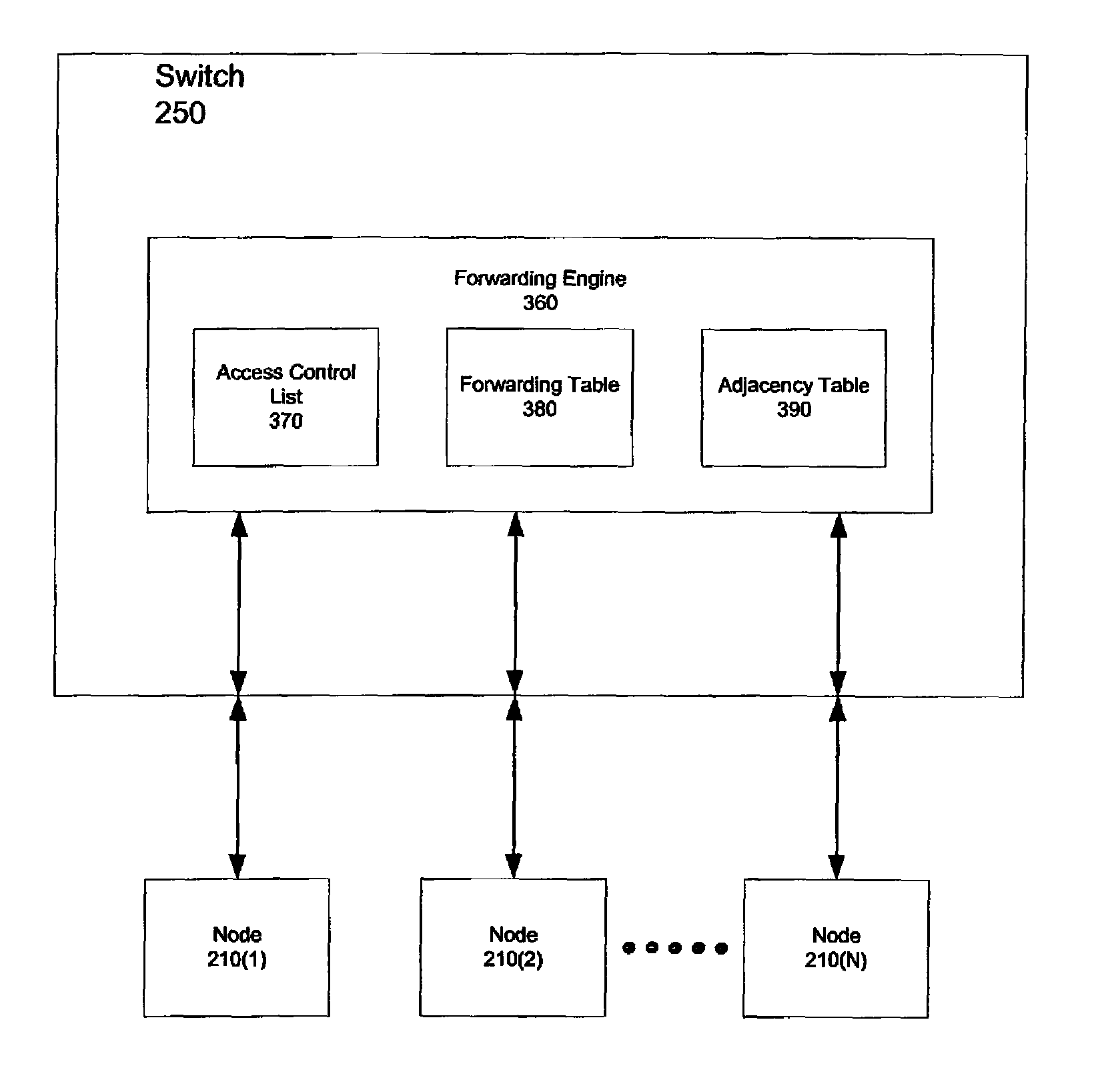Method and system for policy-based forwarding
a policy-based forwarding and policy-based technology, applied in the field of data communications, to achieve the effect of reducing the complexity of the overall network and the manageability problems of extra ip subnets, simple and minimal way, and improving cost-effective design
- Summary
- Abstract
- Description
- Claims
- Application Information
AI Technical Summary
Benefits of technology
Problems solved by technology
Method used
Image
Examples
example configuration
Operation of Example Configuration
[0063]As noted, PBF functionality is configured using, for example, Virtual Local Area Network (VLAN) Access Control Lists (ACLs) (VACLs) on the switch in question. Prior to setting the VACLs, the PBF engine should be enabled. Some configuration of the hosts is necessary: because a router is not used, the address resolution protocol (ARP) table is statically added on each host that participates in PBF scheme. To accomplish this, a packet is sent with a destination media access control (MAC) address equal to that of the “PBF engine's” MAC address.
[0064]When the packet is received, if the packet is subject to the PBF policy, the packet header is re-written (re-write of destination VLAN, source and destination MAC addresses), based on the information provided in the adjacency table, and sent to the destination VLAN. Adjacency information can also be set by the user using VACL commands. Special care should be taken because VACLs are applied to both inco...
example
[0204]Console>(debug-eng) commit security acl adjacency[0205]Commit operation in progress.[0206]Adjacency successfully committed.
Example of Setting a Switch to Provide PBF Functionality
[0207]Incoming traffic from source MAC address 00-20-20-20-20-20 . . . 00-20-20-20-20-2f is sent to destination MAC address 00-11-22-33-44-55, with source IP address 44.0.0.1 . . . 44.0.0.17 to destination IP address 43.0.0.1 . . . 43.0.0.17, and from source MAC address 00-0a-0a-0a-0a-0a . . . 00-0a-0a-0a-0a-19 to destination MAC address 00-11-22-33-44-55, with source IP address 43.0.0.1 . . . 43.0.0.17 to destination IP address 44.0.0.1 . . . 44.0.0.17. The configuration file from the switch (e.g., switch 400) deal with the first 4 cases are (44.0.0.1 . . . 44.0.0.4; 43.0.0.1 . . . 43.0.0.4):[0208]#security ACLs[0209]clear security acl all[0210]#adj set[0211]set security acl adjacency a—1 2 00-0a-0a-0a-0a-0a[0212]set security acl adjacency a—2 2 00-0a-0a-0a-0a-0b[0213]set security acl adjacency a—3 2...
PUM
 Login to View More
Login to View More Abstract
Description
Claims
Application Information
 Login to View More
Login to View More - R&D
- Intellectual Property
- Life Sciences
- Materials
- Tech Scout
- Unparalleled Data Quality
- Higher Quality Content
- 60% Fewer Hallucinations
Browse by: Latest US Patents, China's latest patents, Technical Efficacy Thesaurus, Application Domain, Technology Topic, Popular Technical Reports.
© 2025 PatSnap. All rights reserved.Legal|Privacy policy|Modern Slavery Act Transparency Statement|Sitemap|About US| Contact US: help@patsnap.com



